The best wildflowers of the Supercourse, hands down, were in the Mohave desert. Within 15 minutes of arriving at the Sweeney Granite Mountains Desert Resarch Center, I had taken 50 photos. I’ve narrowed down my desert pictures to 20 of my favorites.
While I had been to the Mohave (Death Valley) this year and the Granite Mountains in years past (in Summer), basically all the amazing flowers were new to me. Our timing was pretty great to maximize diversity. We were at the near the end of the bloom period for many of the little annuals such as
Eriophyllum wallacei (Wallace’s Wooly Daisy, Asteraceae)

and Lupinus shockleyi (Purple Desert Lupine, Fabaceae),
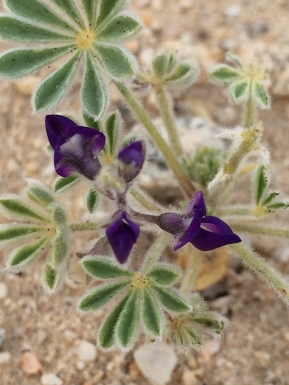
while some of the perennials and shrubs were just getting started. The desert shrubs have especially interesting flowers, unlike anything found elsewhere in California. Here are some cool ones:
Krameria erecta (Littleleaf Ratany, Krameriaceae)

Prsorothamnus arborescens (Mohave Indigobush, Fabaceae)

Salvia dorrii (Desert Sage, Lamiaceae)

Scutellaria mexicana (Paperbag Bush, Lamiaceae)

ADenophyllum cooperi (Cooper’s Dogweed, Asteraceae)

Senna armata (Desert Senna, Fabaceae)
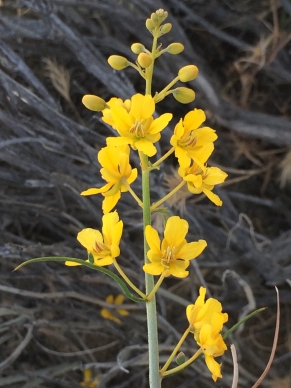
But, the most spectacular “bushes” were all in one thorny family–the Cacti! Here are Five species, each with its own spectacular flower.
Cylindropuntia acanthocarpa (Buckthorn Cholla, Cactaceae)

Echinocerus mojavensis (Mohave Kingcup Cactus, Cactaceae)
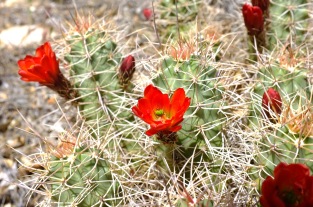
Echinocerus engelmannii (Engelman’s Hedgehog Cactus)
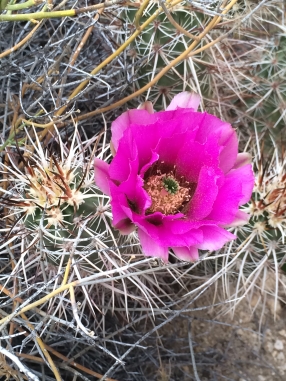
Opuntia polyacantha (Grizzlybear Pricklypear, Cactaceae)
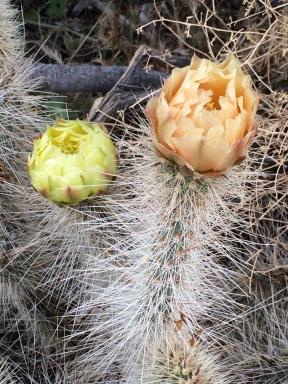
Opuntia basilaris (Beavertail Cactus, Cactaceae)

Cactus flowers are fun to play with because their many stamens are touch sensitive!
No desert trip would be complete without some pictures from my a couple of my favorites–the genus Phacelia and the Polemoniaceae. Here’s one of the former and two of the later:
Phacelia campanularia (Desert Bluebells, Boraginaceae)
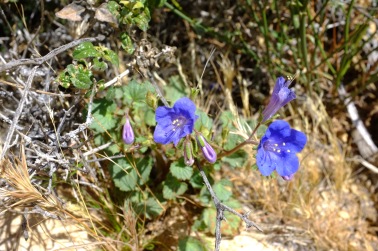
Eriastrum eremicum (Desert Woolystar, Polemoniaceae)
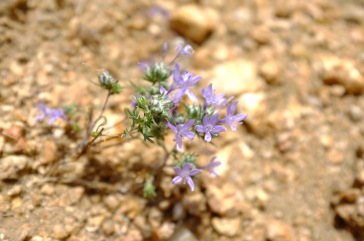
Loeseliastrum schottii (Schott’s Calico, Polemoniaceae)

A few Evening Primroses were blooming, but only showiest made my strict, 20 photo cut:
Oenothera california (California Evening Primrose, Onagraceae)

As with the last post, I have two plants where I need two pictures to show both the pretty flowers and the cool foliage:
Calochortus kennedyi (Desert Mariposa Lily, Liliaceae)
Mentzelia longiloba (Many-flowered Blazing Star, Loasaceae)
The inner yellow “petals” on the later are actually five modified stamens that look like petals.
And finally, here’s the beautiful Mirabilis multiflora (Giant Four O’Clock, Nyctaginaceae), which is a large perennial plant covered in beautiful, two-inch-wide flowers.

That’s all from the desert. Big Creek and Blue Oak to come.




What a wonderful world when there is so much beauty in a desert. Thank you for sharing these lovely flowers.
LikeLike